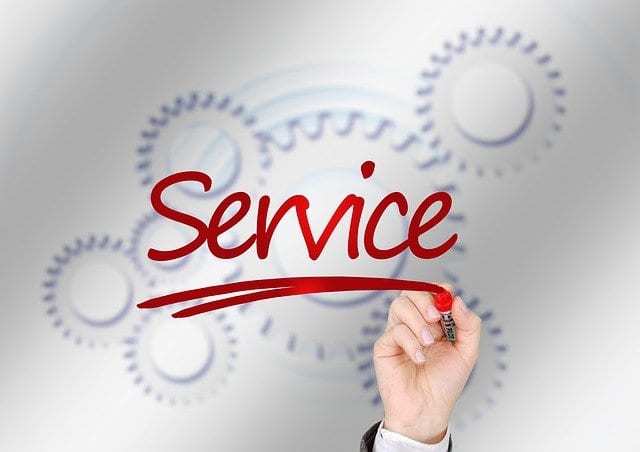A delayed delivery. The wrong size, color or specification. An expired coupon or invalid credentials. Something is bound to go wrong once in a while even as you strive to develop a responsive organization that delivers quality customer service. How these occurrences are handled and customer service issues resolved will create a lasting impression on your customers’ mind about you and your organization.
Customer Service Issues can be resolved using various means. Emails, phone calls, physical meetings and site visits are common ways organizations resolve customer issues. We will look at important considerations in deciding the best means for resolving customer issues and provide some tips to help you resolve customer service issues effectively by Email or Telephone.
Deciding the Best Means to Respond to a Customer Service Issue
It is not enough that you resolve an issue, the process and means you choose to resolve the customer service issue will also create an impression on the customer about how much you value the customer. Here are some considerations for deciding the best means of resolving customer service issues.
How the complaint was filed
The customer’s method of filing a complaint may be indicative of their preferred means of communication.
A customer that sends an email will naturally expect an email response while the customer that called to complain will expect a callback unless otherwise indicated. If you installed a product for a client, a physical visit of the installation team would be appropriate for resolving complaints about the installation.
Documentation considerations
Documentation of complaints and service issues is essential for your organization to monitor operational efficiency and improve service delivery. Ensure that all complaints received are documented along with the resolution. Any means of resolving customer service issues should have a documentation mechanism to ensure accountability.
Internal control measures
Managers and organizational leaders should be aware of service failures and the solutions adopted to resolve such issues. If management and leaders are unaware of service issues they run the risk of overestimating the efficiency and effectiveness of the organization, therefore, complaint resolution mechanism create an opportunity for oversight by managers and leaders.
Gravity of the situation
An appropriate response for a delivery that is one day late will be inappropriate for a delivery that is several days late or never delivered. The extent of the financial implication and error by your organization should also be factored in when deciding the most appropriate means of resolving a customer complaint.
Standardization
Customer service delivery should be relatively uniform and consistent across your organization. Without stifling the personality and individual touch of customer service personnel, standard operating procedures should exist for handling customer service issues. Your preferred means of handling customer service issues should be scalable and easy to replicate across the organization.
Tips for Resolving Customer Service Issues
Here are some general tips for resolving customer issues no matter your preferred means:
Respond Promptly
Aim to respond to customer service complaints within 24-48 hours. Though complaints filed by telephone can be resolved immediately if they are routine issues or the customer service personnel has all the necessary information. Set a standard of responding to issues within a specific timeline and inform customers of this standard when they call or submit a complaint form.
Empathize
When service failures occur, organizations are slow to admit failures or faults for various reasons and may play the blame game. Customer Service personnel should show empathy and focus on finding solutions when responding to customer service issues. If a customer ordered a product and it was delivered much later than expected, apologize for the inconvenience caused.
Watch Your Tone
Your tone and choice of words are more important than ever when dealing with customers and resolving service issues. Take the time to go over your response and fine-tune your language and delivery before engaging customers to resolve customer service issues.
Be Creative & Go the Extra Mile
Think outside the box and apply yourself actively to finding favorable solutions to customer issues. Organizations should give customer service representatives some authority and flexibility in handling customer service issues. Telemarketing organizations often give their representatives the power to offer discounts then set guidelines on the maximum discount that can be offered.
Lindsay Heidbrink of Business Know-How says Make it a Fair Deal. This is how you can help the customer feel like you heard their problem: give them what they lost. If the issue was a late gift shipment, refund their shipping cost—don’t ask for their input on product quality. If the product was faulty, replace it—don’t just give them a discount on their next order. If the customer has been ignored by support representatives, give them all the time in the world—don’t just answer their question. Do what makes sense, because this is what really solves the problem”.
Resolving Customer Service Issues by Email or Telephone
When resolving customer service issues by Email or Telephone, the absence of physical presence makes communication impersonal and prone to misinterpretation, therefore customer service personnel, when resolving service issues by email or telephone, should:
Summarize the issue
Recount the customer’s complaint in your own words. This ensures you have a proper understanding of the issues and shows the customer that you have heard them and understand their complaint. Summarizing the issue in your email or repeating the complaint back to the customer on the phone also helps you to create a record that can be reviewed for documentation purposes.
Provide information
Provide updates on your findings. Let the customer know where the problem occurred and how it can be resolved. This makes the customer feel like part of the team and involved in resolving the problem. Information sharing also educates the customer and makes your organization seem more human and personal.
Offer a Solution
As stated by Lindsay Heidbrink, offer solutions that properly address the underlying issues and make it up to the customer. Offering coupons or discounts on future transactions is a great way to go the extra mile and communicate that you value the customer and wish to keep them as your customer.
Conclusion
When customer service issues occur, forward-thinking organizations must focus on resolving issues in a way that addresses the problem and solves it effectively while maintaining the customer relationship.
This video of Ross Shafer recounting a Customer Service experience he had is instructive of how the handling of Customer Service issues can convert a customer into an advocate for your brand/organization.






